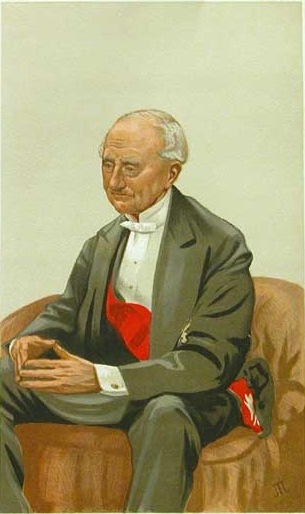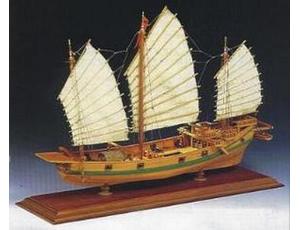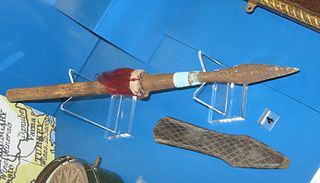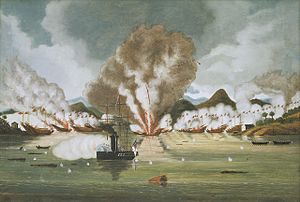
HMS Zebra, was an 18-gun Cruizer-class brig-sloop of the Royal Navy. She was built of teak in the East India Company's Bombay Dockyard and launched in 1815 as the last of her class. She chased pirates in the Mediterranean, just missed the Battle of Navarino, sailed to East Indies, where she almost foundered, and on to Australia, chased Malay pirates, and was wrecked in 1840 during the Syrian War.

Sir Nathaniel Dance was an officer of the East India Company who had a long and varied career on merchant vessels, making numerous voyages to India and back with the fleets of East Indiamen. He was already aware of the risks of the valuable ships he sailed on being preyed on by foreign navies, having been captured by a Franco-Spanish fleet in 1780 during the East Indies campaign of the American War of Independence. His greatest achievement came during the Napoleonic Wars, when having been appointed commodore of one of the company's fleets, he came across a French squadron under Rear-Admiral Comte de Linois, which was raiding British shipping in the area.

Admiral Sir Hastings Reginald Yelverton, was a Royal Navy officer. As a junior officer he took part in a major action against pirates off Candia in June 1826 and was involved in protecting British interests during the Portuguese Civil War during the early 1830s. He saw action in the Crimean War as Captain of one of the two ships that captured a Russian barque beneath the batteries at Ekenäs in Finland in May 1854. Then in July 1873 he took part in the suppression of the Cantonal Revolution in Cartagena. He became First Naval Lord in September 1876 and in that role implemented a series of economies demanded by the Disraeli ministry but was also involved in ordering the small, cheap and thoroughly unsuccessful ironclad Ajax-class battleships.

Shap-ng-tsai was a Chinese pirate active in the South China Sea from about 1845 to 1859. He was one of the two most notorious South China Sea pirates of the era, along with Chui A-poo. He commanded about 70 junks stationed at Dianbai, about 180 miles west of Hong Kong. Coastal villages and traders paid Shap-ng-tsai protection money so they would not be attacked. Chinese naval ships that pursued the pirate were captured and their officers taken captive and held for ransom. The Chinese government offered him a pardon and the rank of officer in the military at first he did not accept, but he eventually did so to avoid legal ramifications.

HMS Alceste was built at Rochefort in 1804 for the French Navy as Minerve, an Armide-class frigate. In the spring of 1806, prior to her capture, she engaged HMS Pallas, then under Lord Cochrane. During the duel she ran aground but Cochrane had to abort his attack when French reinforcements appeared.
Rear Admiral Sir Francis Augustus Collier, CB, KCH was a senior officer of the British Royal Navy during the early nineteenth century. Born into a naval family, Collier served in the French Revolutionary Wars and fought at the Battle of the Nile on Horatio Nelson's flagship. During the Napoleonic Wars he was engaged in campaigns in the West Indies and in 1819 he commanded an operation against pirates in the Persian Gulf. He remained in service for the next thirty years, holding several commands before his death in 1849 as commander of the China Squadron at Hong Kong.

Chui A-poo was a 19th-century Qing Chinese pirate who commanded a fleet of more than 50 junks in the South China Sea. He was one of the two most notorious South China Sea pirates of the era, along with Shap Ng-tsai.

Vice-Admiral Sir Thomas Herbert, KCB, was a British Royal Navy officer. He served in the Napoleonic Wars, War of 1812, and First Anglo-Chinese War. From 1847 to 1849, he was commodore of the South East Coast of America Station. Herbert served as Member of Parliament for Dartmouth as a Conservative from 1852 to 1857.

The Battle of Ty-ho Bay was a significant naval engagement in 1855 involving the United Kingdom and United States against Chinese pirates. The action off Tai O, Hong Kong was to rescue captured merchant vessels, held by a fleet of armed war-junks. British and American forces defeated the pirates in one of the last major battles between Chinese pirate fleets and western navies. It was also one of the first joint operations undertaken by British and American forces.

The Battle of the Leotung was a British victory against an overwhelming fleet of Chinese pirate ships. In 1855 the Royal Navy launched a series of operations into the Gulf of Leotung and surrounding area to suppress piracy, several battles were fought and hundreds of pirates were killed.

The Battle of Tonkin River was a major naval battle fought in northern Vietnam between the pirates of Shap Ng-tsai and the British Royal Navy with aid from the Qing Chinese navy and the Tonkinese. The 1849 expedition led to the destruction of Shap Ng-tsai's fleet and the loss of over 2,000 men. The battle occurred over a three-day period at the mouth of the Tonkin River, near present-day Hai Phong.
Admiral of the Fleet Sir Charles Gilbert John Brydone Elliot was a Royal Navy officer. As a junior officer he was involved in the bombardment of Acre during the Egyptian–Ottoman War.
HMS Aeolus was a 32-gun Amphion-class fifth-rate frigate of the Royal Navy. She was launched in 1801 and served in the French Revolutionary and Napoleonic Wars, and the War of 1812.

The Battle of Nam Quan was fought in 1853 as part of a British anti-piracy operation in China. A Royal Navy sloop-of-war encountered eight pirate ships near Nam Quan and defeated them in a decisive action with help from armed Chinese civilians on land.
Admiral Sir Henry Smith was a British officer in the Royal Navy. He commanded the Aden Expedition in 1839 which took Aden as the first colonial acquisition of the reign of Queen Victoria. For this service he was appointed a Companion of the Order of the Bath. Smith was then sent to serve on the China Station, where he fired the first shot of the First Opium War at the Battle of Kowloon. He played an important role at the controversial Battle of Chuenpi later in the year, and as senior naval officer on the south coast of China fought the Battle of the Barrier. He later participated in the Battles of Second Chuenpi, the Bogue, and Canton, before forming part of the Amoy garrison after the Battle of Amoy. Having left China in 1843, he went on to command ships in the Mediterranean and then in the Baltic Sea during the Crimean War. Smith never served at sea again after obtaining flag rank in 1855 but became superintendent of the Royal Hospital Haslar and the Royal Clarence Yard. He was appointed a Knight Commander of the Order of the Bath in 1873, retiring in the same year.
The Capture of HMS Dominica was a notable single-ship action that occurred on 5 August 1813 off the Bermudas during the War of 1812. American privateer Decatur and the Royal Navy warship Dominica engaged in a fierce contest that ended with the capture of the British ship after a long battle.

The Irene incident of 1927 was a significant event of the British anti-piracy operations in China during the first half of the 20th century. In an attempt to surprise the pirates of Bias Bay, about sixty miles from Hong Kong, Royal Navy submarines attacked the merchant ship SS Irene, of the China Merchants Steam Navigation Company, which had been taken over by the pirates on the night of 19 October. The British were successful in thwarting the hijacking though they sank the ship.

Vice-Admiral Sir Charles Richardson was a British naval officer of the 18th and 19th centuries. His naval career began when he joined HMS Vestal as a captain's servant in 1787. In Vestal he made an aborted journey to China before serving on the East Indies Station where he transferred to HMS Phoenix and fought in the Battle of Tellicherry and the Third Anglo-Mysore War in 1791 and 1792. Having returned to England as a master's mate, Richardson fought at the Glorious First of June on HMS Royal George in 1794 before being promoted to lieutenant in HMS Circe. In 1797, he successfully combated the Nore mutiny in Circe before fighting in the Battle of Camperdown where he personally captured the Dutch admiral Jan Willem de Winter. Afterwards he became flag lieutenant to Admiral Adam Duncan and fought at the Battle of Callantsoog and the Vlieter Incident in the Anglo-Russian invasion of Holland of 1799. He then sailed to Egypt in HMS Kent where he again went onshore, fighting in the battles of Abukir, Mandora, and Alexandria in 1801.
HMS Fury was a Bulldog-class sloop designed by Sir William Symonds, Surveyor of the Navy. She was ordered on 19 February 1844. After commissioning she sailed for the East Indies and participated in action against pirate junks near Vietnam. She then was in the Black Sea for the Crimean War followed by the Second Opium War with China. She was sold for breaking in July 1864.
Vice-Admiral Philip Wodehouse was a Royal Navy officer. A son of John Wodehouse, 1st Baron Wodehouse, he joined the navy some time before 1794. In 1796 he was promoted to commander and then captain, commanding sloops and frigates in the Mediterranean Fleet. Wodehouse cycled through a series of frigate commands towards the end of the French Revolutionary Wars, including HMS Mignonne which he had to burn as useless in 1797. In 1803, while commanding HMS Resistance, his ship was wrecked off Cape St Vincent. Wodehouse subsequently commanded several ships of the line, including HMS Cumberland in the Mediterranean where in 1809 he fought at the Battle of Maguelone. Wodehouse was appointed Resident Commissioner, Halifax, in 1811 and served there until the dockyard was closed in 1819. He was promoted to rear-admiral later in the year. Wodehouse saw no further active service, but was promoted to vice-admiral in 1830.















